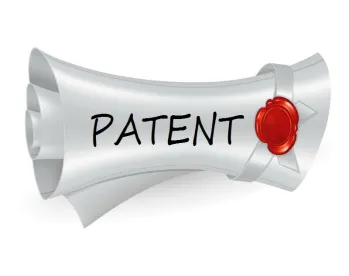The general consensus is that the Supreme Court’s June decision in Halo Electronics v. Pulse Electronics eased the path to proving willfulness. Many speculated that one result of the Halo decision would be an increase in the value of patents, since a finding of willfulness may lead to trebling of damages.
While Halo did away with the objective prong of the willfulness inquiry, and also clarified that the requisite standard of proof for willfulness is a preponderance of the evidence as opposed to clear and convincing evidence, the question post-Halo has been: Now what? After all, the Supreme Court instructed that district courts “‘be guided by [the] sound legal principles’ developed over nearly two centuries of application and interpretation of the patent act.” Halo, 136 S. Ct. 1923, 1935 (2016) (quoting Martin v. Franklin Capital Corp., 546 U.S. 132, 136 (2005)). How have district courts have applied such guidance and legal principles post-Halo? Let’s have a look.
The Factual Components of Willfulness Are Still Resolved by the Jury
One of the early post-Halo questions was whether the decision committed the question of willfulness entirely to the trial court’s discretion. The Federal Circuit addressed this argument almost immediately, stating:
We do not interpret Halo as changing the established law that the factual components of the willfulness question should be resolved by the jury.
WBIP, LLC v. Kohler Co., Nos. 15-1038, 15-1044, 2016 U.S. App. LEXIS 13136, at *49-50; n.13 (Fed. Cir. July 19, 2016). District courts have followed suit. See Presidio Components, Inc. v. Am. Tech. Ceramics Corp., No. 14-cv-02061, 2016 U.S. Dist. LEXIS 110212, at *29-30 (S.D. Cal. Aug. 17, 2016); Trs. of Boston Univ. v. Everlight Elecs. Co., Nos. 12-11935, 12-12326, 12-12330, 2016 U.S. Dist. LEXIS 96045, at *11 (D. Mass. July 22, 2016); Imperium IP Holdings (Cayman), Ltd. v. Samsung Elecs. Co., No. 4:14-cv-371, 2016 U.S. Dist. LEXIS 113307, at *17-18 (E.D. Tex. Aug. 24, 2016).
The Trial Court Is Not Obligated to Enhance Damages Despite a Jury’s Finding
A jury determination as to the factual components of willfulness does not in every case demand an enhanced damages award. The trial court has ultimate discretion to award enhanced damages based on the jury’s factual findings. Halo anticipated scenarios where, despite a jury finding of willful infringement, the trial court may decline to award enhanced damages: “[N]one of this is to say that enhanced damages must follow a finding of egregious misconduct. As with any exercise of discretion, courts should continue to take into account the particular circumstances of each case in deciding whether to award damages, and in what amount.” Halo, 136 S. Ct. at 1933.
The Federal Circuit further settled the issue, stating:
Of course, this is not to say that a jury verdict of willful infringement ought to result in enhanced damages. Whether the conduct is sufficiently egregious as to warrant enhancement and the amount of the enhancement that is appropriate are committed to the sound discretion of the district court.
WBIP, 2016 U.S. App. LEXIS 13136, at *50 n.13. District courts have already exercised their discretion to deny enhanced damages despite a willfulness finding by the jury. See, e.g., Everlight, 2016 U.S. Dist. LEXIS 96045, at *11-12 (“Assuming without deciding that the jury’s verdict, based on the subjective prong of the now-overruled Seagate test, is sufficient to find subjective willfulness, the Court still finds, in its discretion, that the defendants’ conduct did not rise to the level of egregiousness meriting an award of enhanced damages.”); Presidio 2016 U.S. Dist. LEXIS 110212, at *36-37 (“Moreover, the Court notes that ATC’s motion on this issue is essentially moot because the Court, exercising its sound discretion, ultimately declines to award Presidio enhanced damages despite the jury’s finding of willful infringement.”).
Knowledge Is Required, but Egregiousness Is Key
Perhaps the most important takeaway for those following the law of willfulness post-Halo has been the focus of courts on the subjective culpability of the infringer’s challenged conduct, namely, how egregious it really was. This focus is not surprising as Halo itself winnowed the appropriateness of the award to “egregious cases of culpable behavior.” Halo, 136 S. Ct. at 1932. What constitutes egregious behavior is circumstance specific, but it requires, at a minimum, knowledge of the patent. See WBIP, 2016 U.S. App. LEXIS 13136, at *49 (“Knowledge of the patent alleged to be willfully infringed continues to be a prerequisite to enhanced damages.”). At least one district court has interpreted Judge Breyer’s concurrence in Halo (describing how it “is ‘circumstanc[e]’ that transforms simple knowledge into such egregious behavior, and that makes all the difference”) to suggest that knowledge alone, however, is categorically insufficient to support enhanced damages due to willfulness. See Everlight, 2016 U.S. Dist. LEXIS 96045, at *7 (“Justice Breyer’s concurrence also provides helpful guidance.”).
On Egregiousness, The Read Factors May Be Helpful
For those searching for guidelines (notwithstanding Halo‘s admonition of Seagate‘s rigidity), some respite can be found in the Read factors, which are pre-Halo factors established by the Federal Circuit to analyze “the egregiousness of the defendant’s conduct based on all the facts and circumstances.” Read Corp. v. Portec, Inc., 970 F.2d 816, 826-27 (Fed. Cir. 1992). The factors include “(1) whether the infringer deliberately copied the ideas or design of another; (2) whether the infringer, when he knew of the other’s patent protection, investigated the scope of the patent and formed a good-faith belief that it was invalid or that it was not infringed; (3) the infringer’s behavior as a party to the litigation; (4) defendant’s size and financial condition; (5) closeness of the case; (6) duration of defendant’s misconduct; (7) remedial action by the defendant; and (8) defendant’s motivation for harm.” Liquid Dynamics Corp. v. Vaughn Co., 449 F.3d 1209, 1225 (Fed. Cir. 2006). Courts have continued to consider the Read factors post-Halo in determining whether or not to enhance damages, and practitioners would be well served to consider them when addressing willfulness in their cases. See Finjan, Inc. v. Blue Coat Sys., No. 13-cv-03999, 2016 U.S. Dist. LEXIS 93267, at *48-53 (N.D. Cal. July 18, 2016); Imperium IP Holdings, 2016 U.S. Dist. LEXIS 113307, at *18-23; Everlight, 2016 U.S. Dist. LEXIS 96045 at *7-12; PPC Broadband, Inc. v. Corning Optical Communs. RF, LLC, No. 5:11-cv-761, 2016 U.S. Dist. LEXIS 78408, at *17 (N.D.N.Y. June 16, 2016).




 />i
/>i

